Understanding and Resolving Backed Up Bathtub Drains
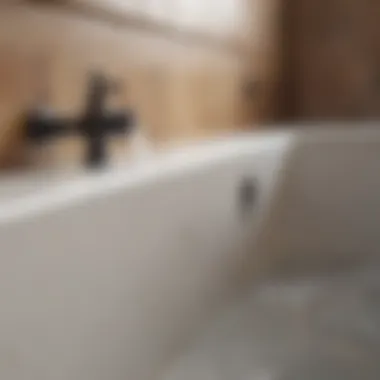
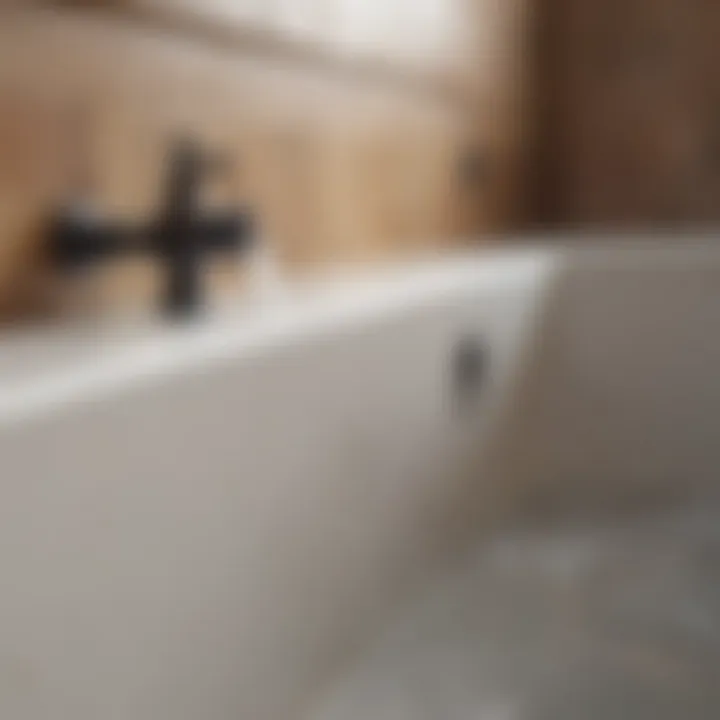
Intro
Dealing with a backed-up bathtub drain can be a frustrating experience for homeowners. It often results in slow drainage and an unpleasant smell, which can detract from the comfort of your bathing space. Understanding the underlying causes, prevention strategies, and remedies for this issue is crucial. This guide provides a thorough examination of what leads to clogs in bathtub drains and how to effectively address them.
Common Causes of Backed Up Bathtub Drains
Several factors contribute to the blockage of bathtub drains. The most typical causes include:
- Hair Accumulation: When washing hair, strands can accumulate and form clumps that block the drain. This is especially common in households with long hair.
- Soap Residue: Over time, soap scum builds up in pipes, narrowing the flow and eventually causing clogs.
- Foreign Objects: Small items, such as toys or toiletries, can fall into the drain and create a blockage.
- Mineral Buildup: In areas with hard water, minerals can accumulate on the inside walls of pipes, leading to restricted water flow.
Being aware of these causes can help prevent future occurrences.
Preventive Measures
Implementing preventive practices can significantly reduce the likelihood of a clog. Here are some effective strategies to consider:
- Install a Drain Screen: A simple drain screen can catch hair and debris before it enters the plumbing system.
- Regular Cleaning: Regularly clean the drain and remove any visible debris. This can include hair and soap residue that may build up over time.
- Use Boiling Water: Periodically, pouring boiling water down the drain can help dissolve soap scum and other buildup.
- Consider a Water Softener: If you live in an area with hard water, installing a water softener can minimize mineral buildup in pipes.
Solutions for Clogs
When facing a blockage, knowing how to efficiently deal with it is essential. Here are some methods to clear a backed-up drain:
- Plunge the Drain: Using a plunger can often loosen a clog. Ensure a good seal around the drain, and use quick, forceful movements.
- Use a Drain Snake: A drain snake can reach deeper blockages that a plunger cannot. Simply insert it into the drain and turn the handle to break up the clog.
- Chemical Drain Cleaners: While effective, chemical cleaners should be used sparingly due to their potential harm to plumbing. Always follow the manufacturer’s instructions.
- Professional Help: If the clog persists, it may be necessary to consult a plumber. They have the expertise and tools necessary to resolve severe blockages.
Regular maintenance is key. Neglect can lead to costly repairs and extensive plumbing issues.
Epilogue
Proactive care and timely interventions can keep your bathtub drains flowing smoothly. Recognizing the signs of a blockage early, employing preventive measures, and knowing how to handle clogs can make a significant difference in your home’s plumbing health. By arming yourself with this knowledge, you reduce inconvenience and enhance the longevity of your plumbing system.
Prolusion to Bathtub Drain Issues
Bathtub drain problems are not just a nuisance; they can signal larger plumbing issues within a home. Understanding these issues can save homeowners time, money, and frustration. Recognizing the signs of drain backups and being aware of their causes is paramount for effective resolution. This section tackles the key points concerning bathtub drains, offering insights into their functionality, common problems, and implications for daily usage.
Understanding Drainage Systems
A bathtub drainage system is a crucial component in maintaining a clean and efficient bathroom environment. At its core lies a network of pipes that transport waste water away from the bathtub. Most systems function by using gravity to aid the flow of water, which exits through a drain and travels through larger drain pipes leading to municipal or septic systems.
Key components of a typical bathtub drainage system include:
- Overflow Drain: This is designed to prevent overflow by directing excess water back into the drain.
- P-Trap: A curved section of pipe that traps water, creating a barrier against sewer gases.
- Drainage Pipes: These pipes connect the bathtub to the home’s main sewage line. They may vary in size, often ranging from 1.5 to 2 inches in diameter.
Understanding these components helps clarify why certain problems occur and how they can be addressed effectively.
Signs of a Backed Up Drain
Homeowners can often detect a backed up drain before it escalates into a more severe issue. Recognizing the signs early can prevent further complications.


Some common indicators include:
- Slow Drainage: Water pooling in the tub during use is a clear sign of a blockage.
- Unpleasant Odors: Foul smells originating from the drain indicate decomposing materials are caught in the pipes.
- Gurgling Sounds: Sounds in the pipes when water is drained may suggest trapped air, a common sign of blockage.
"Timely recognition of these signs can transform a potential flooding disaster into a manageable repair project."
Taking notice of these signals prepares the homeowner to take the necessary steps toward resolution. Promptly addressing these issues not only protects household plumbing but also ensures a more pleasant bathing experience.
Common Causes of Drain Backups
Understanding the Common Causes of Drain Backups is crucial for all homeowners, especially those who want to maintain optimal drainage in their bathrooms. Recognizing these causes allows for timely attention to potential issues, and can prevent small clogs from developing into larger, more troublesome blockages. In addition, understanding these causes can help homeowners to implement preventive measures that can save both time and money in the long run.
Hair Accumulation
Hair is one of the most common culprits behind bathtub drain backups. When individuals wash their hair while bathing, clumps can easily enter the drain. These lumps can mix with soap residue, forming a sticky mass that can block the smooth flow of water. It is important to regularly clean bathtub drains to remove hair. Simple solutions include using a drain cover to catch hair before it gets washed away. Doing this significantly reduces the risk of accumulation, leading to fewer clogs.
Soap and Residue Build-Up
Soap scum and residue are another significant factor contributing to drain backups. Traditional soaps, particularly bar soaps, can leave behind a waxy film that adheres to the sides of pipes. Over time, this buildup narrows the passage through which water flows, leading to an increased chance of clogs. In contrast, liquid soaps tend to dissolve more completely but can still cause issues when combined with minerals found in water. Regular cleaning of the drain with vinegar or baking soda can help mitigate this problem and maintain clear drainage.
Foreign Objects in the Drain
Sometimes, drain blockages are caused by foreign objects that unintentionally enter the drain. Items like toys, cotton balls, and even jewelry can slip into the drain during a bath. When these objects get lodged, they can cause slow drainage or complete blockage. To prevent these scenarios, it is advisable to keep small items away from the tub area. Using a mesh drain cover can also catch these items before they enter the plumbing.
Pipe Damage or Deterioration
Damage or deterioration of the pipes themselves can lead to severe drain backups. Older homes may have pipes made from materials that do not withstand the test of time, leading to cracks or corrosion. Even less visible structural issues like misalignment can cause problems. Regular inspections of the plumbing system can identify weaknesses in the system before they result in significant clogs or water damage. If you suspect that the pipes have deteriorated, it’s prudent to seek professional advice to avoid costly repairs later on.
"Addressing the common causes of drain backups can save homeowners from significant plumbing issues in the future. Regular maintenance is key."
Diagnosing Backed Up Drains
Diagnosing backed up drains is a crucial process in resolving such plumbing challenges. Early detection can mitigate further damage and potentially costly repairs. Knowing how to accurately assess the situation enables homeowners to take informed actions. This section will discuss initial assessment techniques and specialized tools that can help in the diagnosis.
Initial Assessment Techniques
To effectively diagnose a backed up drain, begin with basic visual inspections. Check for visible signs of blockage, such as slow drainage or standing water. A quick look under the sink can reveal clogs within the visible plumbing.
Another useful approach is to remember your daily usage. Identify when the problem occurs. Is it after a bath, or when multiple fixtures are used? Such details provide valuable insights into the extent of the clog.
Additionally, run the bathtub tap and observe how water drains. If it pools or drains irregularly, it reinforces the likelihood of a blockage within the pipes. Common indicators may include:
- Unpleasant odors coming from the drain.
- Gurgling sounds while water flows.
- Water backing up in other fixtures, like sinks or toilets.
Utilizing Tools for Diagnostics
In some cases, visual assessments may not be enough. Here, tools come into play. A hand-held flashlight can illuminate the drain, allowing inspection for obstructions. For deeper investigations, a plumber's snake is invaluable. This tool can navigate the bends in pipes, effectively reaching blockages that are otherwise inaccessible.
In more complicated scenarios, utilizing a plumbing camera can be beneficial. This small camera, inserted into the drain, provides real-time video footage of the inside of pipes. Homeowners can see clogs or damage that may not be visible otherwise.
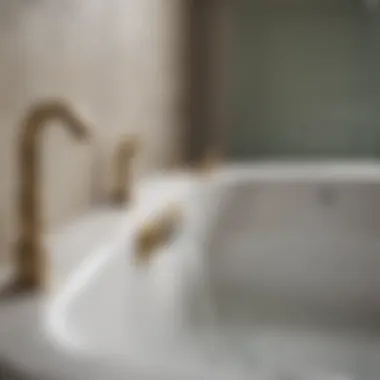
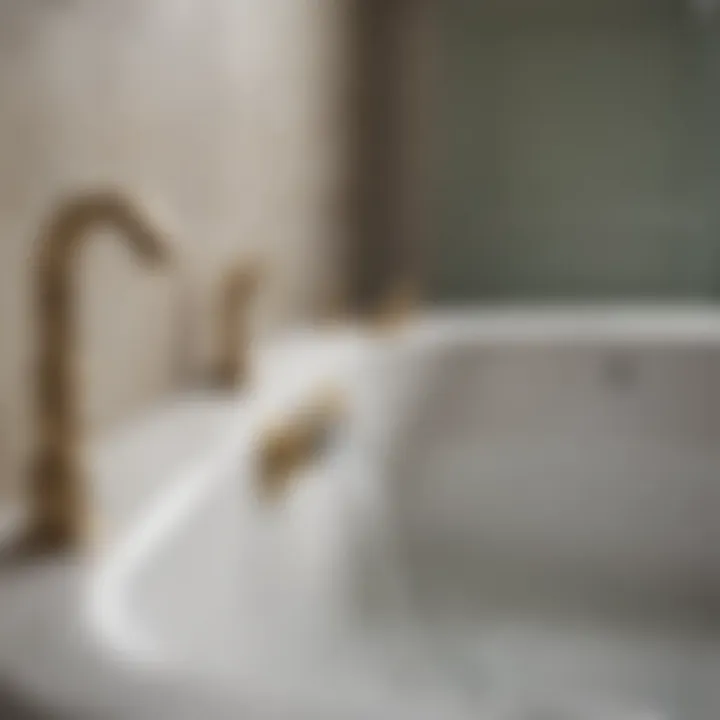
Consider these tools when diagnosing blocked drains:
- Flashlight: To inspect the pipe's entrance.
- Plumber's snake: To clear or identify the nature of the blockage.
- Plumbing camera: For a comprehensive cool diagnostic view.
Through these techniques and tools, diagnosing a backed up drain becomes a systematic process, enhancing the likelihood of successful remediation.
DIY Solutions for Minor Clogs
Dealing with a backed-up bathtub drain can be frustrating. Knowing some DIY solutions for minor clogs can save time and money. These techniques are not only effective but also empower you to take control of your home maintenance. They help avoid the need for a plumber in many cases.
When cleaning drains, one must consider how certain methods can address clogs quickly. DIY solutions typically involve readily available household items. Hence, they contribute to a sustainable approach to home repair. Here, we delve into three well-known methods that can clear minor clogs effectively.
Plunger Method
The plunger is a familiar tool in most homes. Its importance lies in its mechanical action; it creates pressure that can dislodge clogs. When using a plunger, the proper technique is vital. Ensure there is enough water in the tub for the plunger to create a seal. Place the plunger over the drain and push down firmly with steady pressure, then pull up sharply. Repeat this motion several times.
Tip: If using a plunger for a bathtub, make sure to cover the overflow drain with a wet cloth. This will prevent air from escaping, making the process more efficient.
Baking Soda and Vinegar Approach
Another effective method is the use of baking soda and vinegar. This combination creates a reaction that can break down minor clogs caused by organic matter. Start by pouring half a cup of baking soda down the drain. Follow with half a cup of vinegar. You should observe fizzing as the two ingredients interact. Let the mixture sit for about 30 minutes, then flush the drain with hot water. This method is not only eco-friendly but can also improve drain hygiene.
Using a Drain Snake
A drain snake is a versatile tool for removing clogs. It is especially useful when other methods do not work. To use a drain snake, insert the end of the snake into the drain. As you turn the handle, the snake will navigate through the pipes, grabbing hair or other debris. When you feel resistance, continue twisting to break apart the clog. Once completed, pull the snake out and run hot water down the drain to ensure everything is clear.
Each method has its advantages, depending on the severity of the clog and what is available in your home. Understanding these DIY techniques helps maintain your bathtub’s drainage system effectively.
When to Call a Professional
Managing a backed-up bathtub drain can often entail straightforward solutions, but there are times when expert help is necessary. Knowing when to call a professional plumber can save time, money, and further damage to your plumbing system. This section highlights critical aspects that should inform your decision about hiring a professional.
A significant indication of when to seek professional assistance includes the severity of the blockage. If basic methods like plunging or using a drain snake fail to alleviate the issue, the blockage may lie deeper in the plumbing system. Such complications often involve extensive training and tools which are not available to the average homeowner.
Common indicators of severe blockage include:
- Persistent slow draining that does not improve after DIY efforts.
- Water pooling in the bathtub and not draining away completely.
- Foul odors emanating from the drain, signaling a potential buildup that may require specialized cleaning techniques.
- Recurring clogs that happen despite regular cleaning practices.
- Signs of water damage or unusual sounds coming from the pipes.
If any of these signs are apparent, professional intervention is advisable. They can identify and rectify issues that are beyond the scope of typical household maintenance.
Another consideration is the potential for damage to both your plumbing system and your home. Attempting to resolve complex clogs without the necessary expertise might lead to more significant problems, such as pipe rupture or leaks, which may cause water damage or mold growth. Engaging a professional can mitigate these risks.
Finally, the peace of mind that comes with hiring a professional cannot be overstated. Licensed plumbers possess expertise that allows them to address drain issues efficiently and effectively. They are trained to recognize and resolve the underlying problems rather than just alleviating surface symptoms. This can prevent future headaches and save you money in long-term repairs.
Indications of Severe Blockage
Recognizing the signs of a severe blockage can be crucial for timely intervention. Visible indicators often manifest in the form of water backup, particularly in the bathtub. If water fails to drain promptly after use, this is a primary signal of a blockage worth investigating further.
Audio clues can also signify trouble. Unusual sounds, such as gurgling or bubbling, may point to airflow issues in the plumbing system usually caused by deep clogs. In the same vein, unpleasant smells rising from the drain shouldn’t be overlooked, as they can signal stagnant water or decaying organic matter in the pipes.
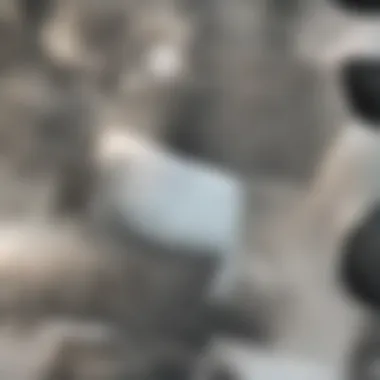

If you experience any of these issues along with recurrent clogs—even after attempting various DIY solutions —it may be time to contact a plumber. Delaying action could exacerbate the problem and lead to more costly repairs.
Choosing a Reliable Plumber
Once you decide to seek professional help, choosing the right plumber becomes a crucial task. It is important to research and find someone who can effectively address your specific situation. Start by looking for local plumbers who are licensed and insured. This ensures they meet necessary standards and provides you some protection in case of mishaps.
Positive reviews and recommendations can significantly help in making your choice. Referrals from friends, family, or online platforms like Reddit or Facebook can lead you to reliable professionals. Look specifically for reviews mentioning previous drain issues similar to yours.
Understanding the services offered is equally essential. A trustworthy plumber should provide a range of services, such as drainage cleaning, inspection, and preventive maintenance. They should be willing to explain their processes clearly, providing an upfront estimate of costs before beginning any work.
Inquire about their experience and qualifications. An experienced plumber is likely familiar with various plumbing systems and can potentially spot issues more quickly than someone with less experience. This knowledge can save both time and money in figuring out the best solutions for your drain problems.
Finally, considering the cost is vital, but it should not be the only factor. An unusually low estimate may indicate a lack of quality workmanship or hidden costs later. Beneficial plumbing service often reflects investment in quality and reliability. Always weigh factors such as service quality, reputation, and experience alongside cost considerations.
Preventive Measures for Bathtub Drains
Preventive measures play a crucial role in maintaining the efficiency of bathtub drains. Addressing potential issues before they escalate can save homeowners time, money, and significant inconvenience. Regular maintenance helps to protect the integrity of drainage systems and prolongs their lifespan. Without adequate preventive actions, minor complications can turn into severe blockages. Therefore, it is essential to integrate effective practices into your routine.
Regular Drain Cleaning Techniques
Routine cleaning is one of the most effective methods for preventing drain buildup. Homeowners should consider establishing a scheduled maintenance routine. Here are some recommended techniques:
- Boiling Water: Pouring boiling water down the drain can help dissolve soap scum and grease. It is a simple yet effective method.
- Baking Soda and Vinegar: This natural solution helps to tackle clogs caused by organic materials. Pour a cup of baking soda, followed by a cup of vinegar. Let it sit for about 15 minutes before flushing with hot water. This reaction can help break down buildups effectively.
- Regular Inspection: Check the drain for visible clogs or debris. This step allows for early detection of potential problems. Removing hair and other residues can prevent significant issues.
Incorporating these cleaning techniques into a regular routine can significantly reduce the risk of drainage problems.
Install Drain Covers
Another preventive measure is to use drain covers or strainers. These devices are designed to capture hair, soap, and debris before they enter the drainage system. The benefits of installing drain covers include:
- Cost-Effective: They are an inexpensive investment that can save costly repairs in the future.
- Simple Maintenance: Regularly cleaning the drain cover is a quick task that can prevent major clogs. Remove hair and debris when noticed.
- Variety of Designs: Available in various styles and sizes, homeowners can choose covers that suit their bathtub's aesthetics and functionality.
These measures can greatly enhance the efficiency of your bathtub drain. Keeping drains clean and covered will prevent common clogs and extend the life of your plumbing system.
In summary, implementing preventive measures such as regular cleaning and installing drain covers is vital. These actions not only safeguard against future blockages but promote a more effective drainage system overall.
Ending
The conclusion wraps up the discussion surrounding bathtub drain issues, specifically focusing on resolving backups effectively. Understanding the root causes of drain blockages and implementing preventive measures is essential for homeowners. This not only enhances the longevity of plumbing systems but also promotes cleaner and healthier living environments.
Summary of Key Points
A clear overview of significant topics covered includes:
- Recognizing Signs of a Backed Up Drain: Homeowners should be vigilant for slow drainage, unusual odors, and gurgling noises.
- Common Causes of Backups: Major contributors include hair, soap residue, foreign objects, and pipe damage.
- Diagnostic Techniques: Initial assessments coupled with tools can help identify the problem areas.
- DIY Solutions: Practical methods, like using a plunger or a baking soda and vinegar approach, can tackle minor clogs effectively.
- When to Seek Professional Help: Recognizing severe blockages that require a plumbing expert is crucial.
- Preventive Measures: Regular drain cleaning and the installation of drain covers can minimize future issues.
Final Thoughts on Drain Maintenance
Maintenance is pivotal. Regularly attending to bathtub drain issues not only solves existing problems but also prevents potential ones. Homeowners should consider developing a routine for checking and maintaining their drains. It is advisable to keep a toolkit ready, including a plunger, snake, and cleaning agents.
A proactive approach can save time and money and maintain proper hygiene in the home. Investing in preventive measures reinforces the structural integrity of the plumbing system and contributes to the overall value of the home.
"Prevention of clogs is far easier than clearing them."
This underscores the importance of remaining proactive. Homeowners can find detailed how-to guides on platforms like Wikipedia or community discussions on various issues at Reddit. By emphasizing prevention and maintenance, one can foster a seamless drainage experience in the bathtub.















